It’s not just paranoia: Driving at night is actually more dangerous. Fatal accidents are three times more likely at night compared with the daytime, according to the National Highway Traffic Safety Administration (NHTSA).
The main reason for this—not surprisingly—is that we can’t see as well in the dark, says Alex Epstein, director of transportation safety at the National Safety Council: “You see less of the road ahead of you and have less room and time to stop.” Ironically, some kinds of light—like the glare from too-bright lights—can compound the problem.
But other factors add to the challenge of driving at night. Here are 12 tips that could help reduce the risk.
1. Be Extra Defensive
Drinking and driving poses a bigger risk after dark, according to NHTSA, which has found that the rate of fatal crashes involving alcohol impairment is almost four times higher at night than during the day. Of course, never get behind the wheel after drinking, no matter what time of day it is (don’t drive while distracted either); but at night, it’s a good idea to put your defensive-driving instincts on high alert.
2. Combat Fatigue
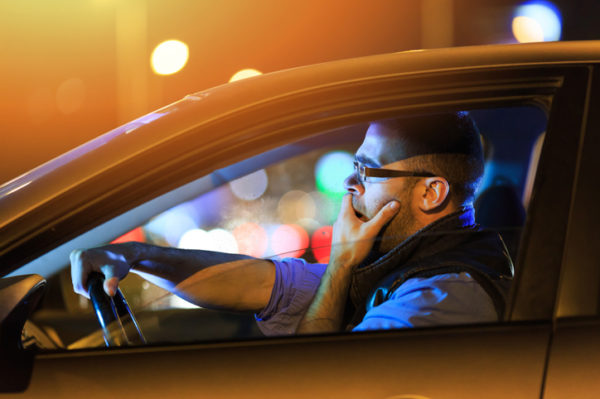 Drowsy-driving crashes are most likely to happen between midnight and 6 a.m., says NHTSA. So be aware during these hours that there may be sleepy drivers on the road—and keep yourself alert. Have some caffeine, pull over in a safe area to get some rest, or stop for the night. Some drivers have reported other activities that can help: turning the radio on (not too loudly); rolling down the windows periodically for fresh air; and talking or singing to yourself.
Drowsy-driving crashes are most likely to happen between midnight and 6 a.m., says NHTSA. So be aware during these hours that there may be sleepy drivers on the road—and keep yourself alert. Have some caffeine, pull over in a safe area to get some rest, or stop for the night. Some drivers have reported other activities that can help: turning the radio on (not too loudly); rolling down the windows periodically for fresh air; and talking or singing to yourself.
3. Clean Up Your View
Dirty or damaged windshields can scatter light and potentially increase the effects of glare, according to NHTSA. The group also reports that dirty or damaged headlights can decrease your visibility and cast glare onto oncoming drivers. So clean headlights and windshields regularly; you can use a special cleaning kit for headlights.
4. Avoid Two-Lane Highways
NHTSA says two-lane highways may be a “worst-case scenario” for nighttime glare, due to oncoming cars’ headlights, lower overall light, and the fact that these roads tend to have more sharp curves and hills than a freeway. If you can, take a safer route at night.
5. Slow Down
Speeding-related crashes account for 37 percent of nighttime-driving fatalities, says NHTSA—compared with 21 percent of those during daylight hours—due to lower visibility and shorter reaction times. For example, your headlight typically shines 160 feet in front of you, but even at 40 mph, you need 190 feet to stop. Adjust your speed to take conditions like visibility into account, says Russ Rader of the Insurance Institute for Highway Safety (IIHS).
6. Angle Your Headlights Correctly
If the beams tilt down too much, you’ll lose some of the illumination you need while driving. But if they tilt too high, they can blind oncoming drivers. Some states’ annual inspection tests include checking the headlight angle—but otherwise, take the initiative to make sure yours are pointed correctly. “This isn’t usually a DIY project,” says Rader. “Consumers should go to their car dealer or a repair facility for assistance.”
7. Use High Beams When Appropriate
 High beams are underutilized, says Rader, but can be very helpful in rural areas or on open roads. Just remember to dim them when you’re within 500 feet of an oncoming vehicle (so you don’t temporarily blind the other driver), and don’t use them if you’re following another vehicle. If you’re in the market for a new car, Rader recommends looking for adaptive lighting systems that automatically adjust your high beams depending on the presence of other cars.
High beams are underutilized, says Rader, but can be very helpful in rural areas or on open roads. Just remember to dim them when you’re within 500 feet of an oncoming vehicle (so you don’t temporarily blind the other driver), and don’t use them if you’re following another vehicle. If you’re in the market for a new car, Rader recommends looking for adaptive lighting systems that automatically adjust your high beams depending on the presence of other cars.
8. Tweak Your Inside Lighting
If your dashboard lights are too bright, glancing from the dashboard to the dark road ahead can be disorienting, says the NSC’s Epstein. “Dim the interior lights at night, so that critical controls remain easily visible but not distracting,” he recommends. “And use your visors at night to shield you from outdoor street lighting and glare.” Many new cars, he adds, have mirrors that automatically dim the reflections from bright light.
9. Look In The Right Direction
While you should always keep your eyes on the road, avoid a fixed gaze and never stare at oncoming headlights, says Epstein. When approaching an oncoming vehicle, avoid being blinded by its headlights by shifting your eyes down and to the right, using the right edge of the road or lane markings as a guide to stay on track. Lift your gaze back up when you’ve passed the oncoming vehicle.
10. Watch For Wildlife
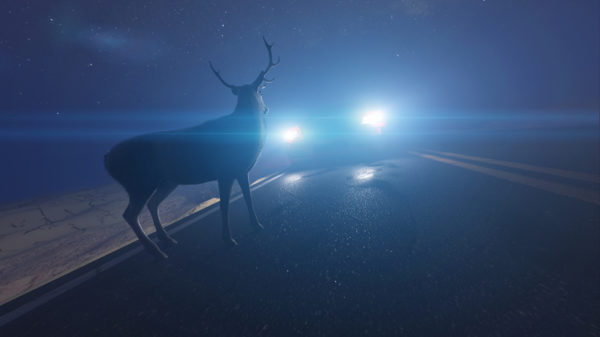 Collisions with deer often happen at dusk or at night and are more common from October to January. Your high beams can help you spot an animal’s glowing eyes. When you see them, the safest way to avoid an accident is by slowing down and stopping—not by swerving.
Collisions with deer often happen at dusk or at night and are more common from October to January. Your high beams can help you spot an animal’s glowing eyes. When you see them, the safest way to avoid an accident is by slowing down and stopping—not by swerving.
11. Take Care Of Your Eyes
Get your vision checked every year, suggests the NSC; glare becomes more problematic for people as they age. You may also need a different prescription at night.
12. Test And Use Your Lights
Regularly test all your lights, including low beams, high beams, daytime running lights, turn signals and brake lights. And make sure to use your headlights to stay visible; not only do you need to turn them on when it’s dark, but you should turn them on in adverse weather conditions like rain, snow and hail.
Never be in the dark when it comes to your auto insurance. When you keep the GEICO Mobile app on your phone, you can have easy access on the go to roadside help, digital ID cards and more. Download GEICO Mobile today.
Read more: Heads Up! Are You Driving Drowsy?
By Katrina Brown Hunt




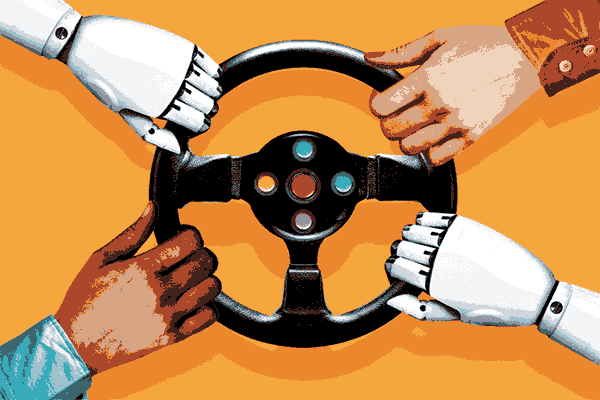
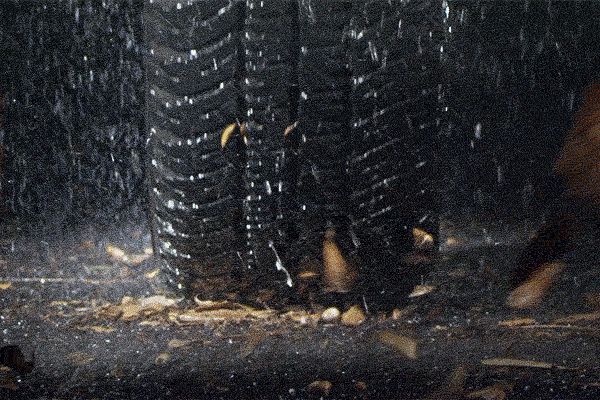
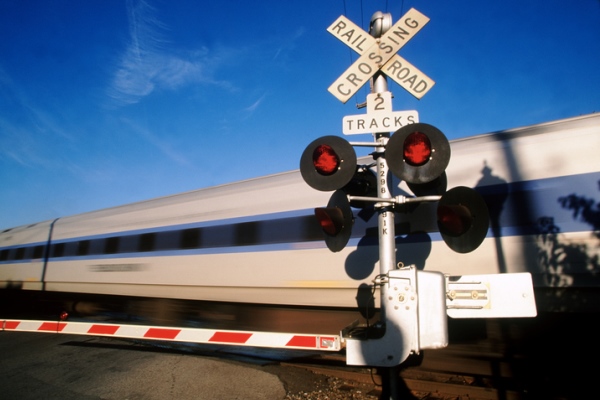



EYRIA R MURPHY says,
Thank you for the tip’s
Mike Myrick says,
Thanks for these tips. Us “Old Fogies”, need to be prodded once in a while or, maybe twice. I often wish we had not abandend the annual safetycheck. I would also like to see auto manufacuters especially larger pickup trucks review their specs. The trucks are so high these days, their headlights are almost always blinding to drivers of the smaller/lower built vehicles.. I have been a GEICO customer for many years and appreciate these tips and your great TV Commercials as well.
Mike M. says,
Thanks for the tips. While I am aware of them an occassional reminder/refresher is good for one’s safety.
Clyde says,
Thanks for the useful tips. I really appreciate.
Brenda Phillips says,
Great advice! In a perfect world everyone would adhere to wisdom. Safety should be on everyone’s mind. However, we live in a world where some people make no sense, and regret things when it’s much to late. May we all try to be mindful, and respectful when we’re on the roads at all times. Thanks Geico for the tips!
Devender says,
Very useful recommendations. Thanks for sharing.. Will check if my car ha adaptive lights.
Juan Carlos Urrutia says,
Great remainders thanks al lot ??
Alba castillo says,
I don’t usually have time to read through these emails but curiously whenever I read them they contain interesting information. Keep it up it a good tool and it’s free.
Samson says,
It is very helpful tips I am going to use all the these tips. Thanks.
matt says,
“Tweak Your Inside Lighting
If your dashboard lights are too bright, glancing from the dashboard to the dark road ahead can be disorienting, says the NSC’s Epstein. “Dim the interior lights at night, so that critical controls remain easily visible but not distracting,” he recommends. “And use your visors at night to shield you from outdoor street lighting and glare.” Many new cars, he adds, have mirrors that automatically dim the reflections from bright light.“
Am I the only one that combats eye fatigue by keeping my lights on non high beam and keeping the dome light on? Nothing fatigues my eyes like turning on the high beams that make my eyes strain to see far away in low light. Glancing from a lit cabin to the road and back combats the eye strain. And it helps me stay awake because my eyes dont get tired.
Charolette Adams says,
This information is very helpful to me. My long distance night driving has picked up recently; consequently have been more concerned about safety. Thank you for addressing several of these concerns.
Sukhvinder Singh says,
Thanks for all the safety tips reminds me back. Keep this good work going to send everyone for Safety.
lilya says,
Thank you,
it is very helpful.
Norma I Rosado says,
These are very good advices. Specially for new drivers who think they own the strrets. When I started driving in 1975 I only had my permit and I had an accident I was not speeding . I went into an unknowing zone and I made a turn into a Wrong place. Thanks god the other person was driving slowly and so was I so nothing happened to any of us . That was my worst but also a good expirience. Since that time I learned to drive more carefully and sence I got my license the same year I have never had an accident . My record is very clean.
Daniel Arguello says,
good comments, thanks